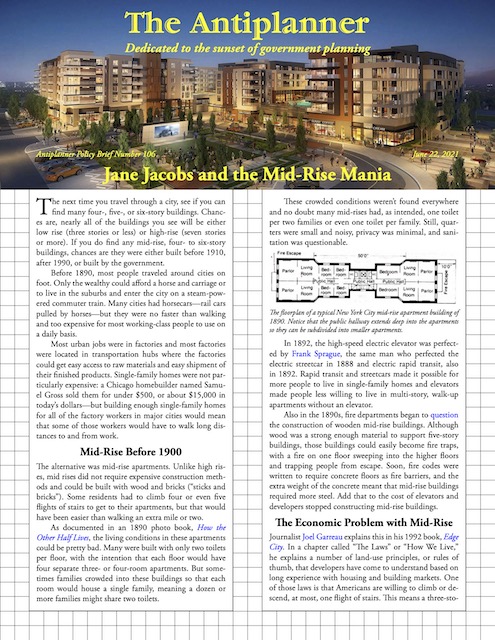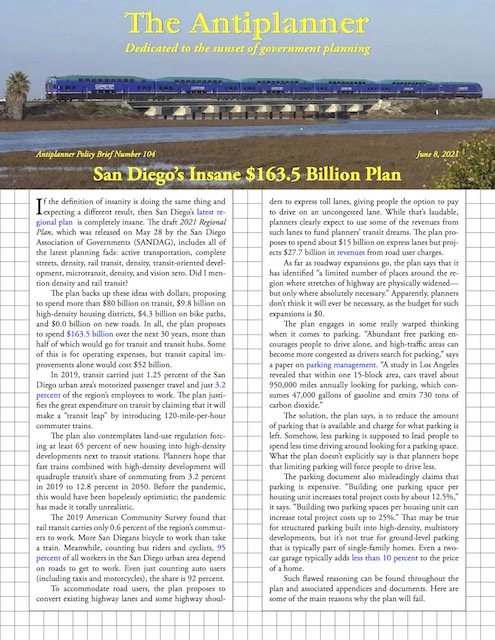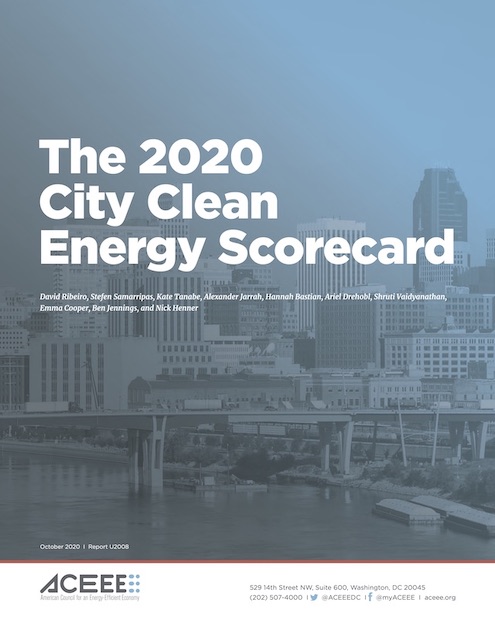The next time you travel through a city, see if you can find many four-, five-, or six-story buildings. Chances are, nearly all of the buildings you see will be either low rise (three stories or less) or high-rise (seven stories or more). If you do find any mid-rise, four- to six-story buildings, chances are they were either built before 1910, after 1990, or built by the government.
 Click image to download a five-page PDF of this policy brief.
Click image to download a five-page PDF of this policy brief.
Before 1890, most people traveled around cities on foot. Only the wealthy could afford a horse and carriage or to live in the suburbs and enter the city on a steam-powered commuter train. Many cities had horsecars—rail cars pulled by horses—but they were no faster than walking and too expensive for most working-class people to use on a daily basis. Continue reading











